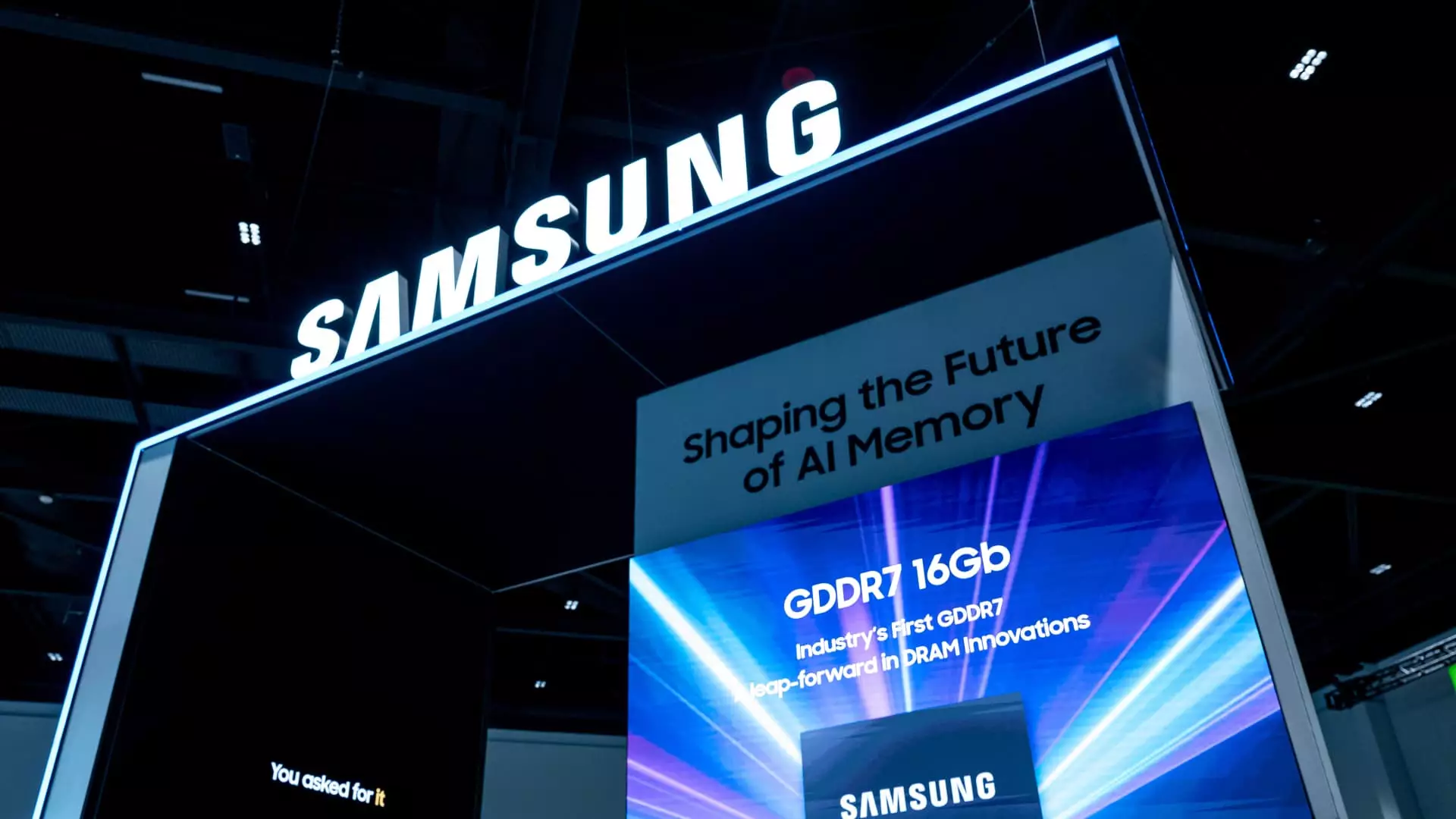Samsung Electronics, a titan of the technology industry, recently issued a stark forecast that signals challenging times ahead. With an expected second-quarter operating profit plunging by over half—specifically a 56% decline—the company is clearly facing headwinds that threaten its longstanding dominance. While this grim outlook may appear purely financial, it underscores deeper systemic issues within Samsung’s strategic positioning—particularly as it grapples with shifts in market demand, geopolitical constraints, and fierce competition from rivals like SK Hynix and Microin Technology. The reduced profit projection to approximately 4.6 trillion won, from an impressive 10.44 trillion won the previous year, is not merely a transient setback but a reflection of fundamental industry tectonics reshaping the electronics landscape.
The declining revenue forecast, slipping below analyst estimates, further amplifies the narrative of a company that is struggling to maintain its momentum. The market’s reaction—prompting a slight dip in Samsung’s stock—indicates growing investor concern, yet perhaps also exposes an opportunity for the company to re-evaluate its core strategies. As Samsung continues to lead in smartphones and memory chips, the emphasis must shift from traditional strengths to pioneering adaptive solutions tailored for the AI revolution—a space where competitors like Nvidia have pulled far ahead.
Challenges in the AI Chip Supply Chain and R&D Delays
A significant factor behind Samsung’s stumble lies in its ability to meet the explosive demand for high-performance AI chips, particularly high-bandwidth memory (HBM). Nvidia’s dominance—accounting for roughly 70% of global HBM demand—places immense pressure on Samsung to innovate rapidly and secure pivotal supply agreements. Yet, according to industry insiders, Samsung’s efforts to certify its latest HBM offerings with Nvidia have been delayed until at least September, dampening expectations for near-term revenue contributions.
This delay is emblematic of the increasing difficulty in staying ahead in a hyper-competitive sector where technological benchmarks are relentlessly pushed higher. While Samsung has managed to secure some supply deals with AMD, these are relatively minor and unlikely to alleviate the immediate pressures of a sluggish ramp-up. The company’s hesitation or delays in certification highlight a broader challenge: in advanced semiconductor manufacturing, qualification and trust are paramount, and any setbacks can create cascading effects across sales pipelines.
Moreover, the company’s ongoing losses in its foundry business—an area where the stakes are higher than ever—add a layer of complexity. With TSMC maintaining a formidable competitive edge in manufacturing advanced chips, Samsung’s lamentable position in this segment is partly due to not just technological gaps but also strategic missteps. The resultant weak order inflows threaten the company’s ability to leverage its manufacturing capacity fully, which could further erode margins at a time when high-margin AI chips should ideally be generating sizable profits.
Industry Dynamics and Internal Challenges
Samsung’s predicament is rooted not only in supply chain hiccups but also in internal strategic conflicts. The report indicating a 30% staff reduction across subsidiaries speaks volumes about internal restructuring efforts. Such cuts may reflect an attempt to streamline operations amid declining profits, but these steps can also hinder innovation and slow responses to market shifts.
Furthermore, Samsung’s rivals in memory and AI chips are not standing still. SK Hynix, for example, has cemented its position as Nvidia’s primary HBM supplier, making Samsung’s quest to regain leadership more arduous. These competitive moves—combined with geopolitical factors like U.S. restrictions affecting AI chip exports to China—compound Samsung’s difficulties in expanding its market share or innovating freely within global markets.
Yet, there is an undercurrent of resilience. Samsung’s strategic moves to improve its HBM technology and expand customer evaluation efforts show that the company is not static but actively seeking to adapt. While progress may seem sluggish now, the company’s sizeable R&D budget and expertise position it favorably if it can overcome its current hurdles and accelerate product development.
A Silver Lining Amidst the Challenges
Despite the bleak headline figures, Samsung’s stock performance—up over 16% year-to-date—indicates investor confidence in its long-term prospects. This optimism is rooted in the company’s diversified portfolio and historical capacity to bounce back from setbacks through innovation. However, the road ahead demands bold strategic recalibration; simply relying on legacy strengths will no longer suffice in a landscape defined by rapid technological obsolescence and geopolitical intricacies.
In essence, Samsung’s current predicament underscores a broader lesson for tech giants: dominance in traditional markets cannot guarantee resilience unless coupled with relentless innovation in emerging fields. The company must accelerate its AI chip development, forge strategic alliances, and perhaps most critically, prioritize agility in its supply chain and R&D processes. Failure to do so risks losing its competitive edge—not just to specialized chipmakers but to the entire paradigm shift driven by AI and next-generation computing technologies.

